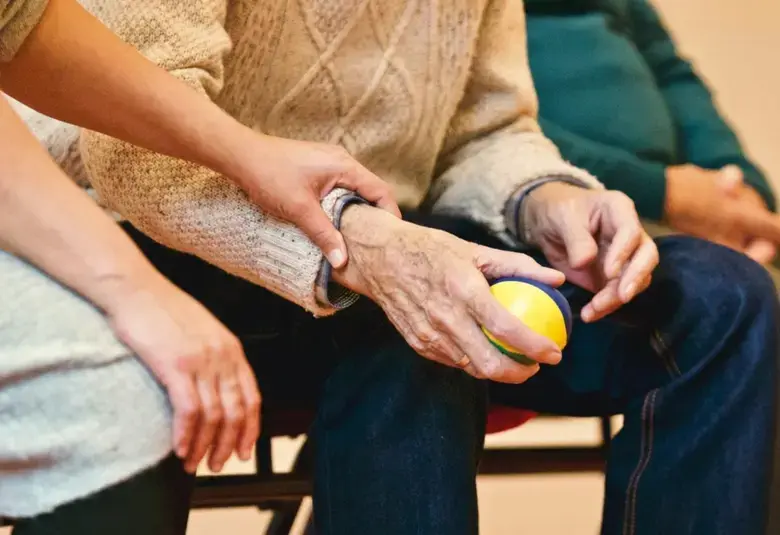The practice of medicine is a mutable, ever-changing field. With its dynamicity, it can become vulnerable to many challenges – challenges that must be addressed by physicians in order to deliver safe, efficacious, and accessible healthcare to patients. Since the beginning of the COVID-19 pandemic, such challenges have increasingly impeded the delivery of healthcare to non-COVID patients – a phenomenon which has proven to be more starkly evident in the transition from physical to virtual medicine, in which preservation of quality of patient care is crucial. Unfortunately, with COVID-19 under the spotlight, many patients with other conditions have been set aside; cases of collateral mortality and morbidity from other diseases deemed to be non-emergent, though undeniably present, are regrettably under-reported. This can be attributed to limited accessibility to adequate health care and information. We discuss the current challenges in the delivery of healthcare to migraineurs with depression – patients who, like those patients currently admitted in the hospital, still require medical attention.
The current setting
The COVID-19 pandemic has been an unprecedented force of change since its emergence in December 2019. Different quarantine guidelines have been implemented to control the spread of the disease, leading to the issuance of a travel ban for non-essential duties, enforcement of the limitation of face-to-face transactions, and the transition to home-based work. This major societal reorganization has also affected the hospital workforce, as the closure of out-patient departments across many hospitals was necessary to focus hospital resources and manpower on emergent cases, including severe COVID-19 infection.
Migraine is one of the most prevalent but poorly recognized disorders worldwide. It is not fatal; however, there is a lack of recognition among the general population.1 It is estimated there are more than 1.89 billion cases of migraine worldwide, making it the 6th most common and 2nd most disabling condition.1,2 In the Asia-Pacific region, there are around 23 – 65 million individuals affected with migraine.3
Even with these glaring numbers, migraine only accounts for less than 1% of all visits in outpatient clinics. There is a wide discrepancy between the number of migraineurs and migraine consults in clinics.4 Aside from its effect on productivity, a systematic review done in 2019 showed that 7 out of 10 migraineurs also experience depression. 5 This creates an endless cycle of suffering, as depression has also been linked to more frequent and disabling headaches.5 Moreover, chronic migraineurs with aura have an increased susceptibility to suicidal ideation that is independent of headache frequency.6 In the context of the COVID-19 pandemic, a sevenfold increase in the cases of depression has been noted compared to the pre-pandemic era.7 Due to the lack of data on the prevalence of depression among migraineurs during the COVID-19 pandemic, it can be extrapolated that cases may have also increased.
With the current pandemic, a major shift of interest to COVID-19 and its different manifestations took the spotlight in terms of research and patient care. This led to a diminished focus on diseases that are non-emergent and non-life-threatening but are nonetheless disabling, such as migraine and depression.
Teleneurology
The American Academy of Neurology recommends the use of telemedicine in chronic non-emergent neurological diseases such as migraine.8 Studies showed that, when compared to face-to-face consultation, telemedicine is non-inferior, cost-effective, convenient, and has an equally high satisfaction rate.2,8–11 Telemedicine can be conducted through real-time phone or video calls, text message, e-mails, or file exchange.12,13 It is a versatile alternative to address patients’ concerns and aims to avoid having them seek unverified information from the Internet. However, telemedicine is not without limitations. Issues regarding health reimbursement, upgrading of facilities, connectivity issues, proper documentation, licensing, and regulation of practice have been raised.14 Telemedicine offers an alternative solution for neurologists to deliver patient care while promoting safety between the practitioner and patients.
Pharmacotherapy
Current guidelines recommend the use of NSAIDS, triptans, narcoleptics and calcitonin gene-related peptide antagonists for acute treatment of migraine attacks.15,16 For breakthrough pain, the use of valproate and longer-acting triptans for 5-7 days have been suggested. 17 Opioids, barbiturates, tramadol, and caffeine must be avoided due to greater risk of medication overuse headache. 2 Prevention of migraine is also being advocated with the use of botulinum toxin, angiotensin-converting enzyme (ACE) inhibitors, angiotensin receptor blockers (ARBs), beta blockers, topiramate, flunarizine, amitriptyline, and sodium valproate.18–20 However, some concerns have been raised with the use of ACE inhibitors and ARBs in the setting of COVID-19. ACE inhibitor use has been theoretically related with an increased risk of developing COVID-19 infection due to the upregulation of ACE-2 receptors, although this has only been proven in animal studies.21–24 The prophylactic use of botulinum toxin significantly reduces headache as well as depressive and anxiety symptoms in some patients; however, injections should be avoided as much as possible to prevent unnecessary exposure to COVID suspects.19,25
Different pharmacologic recommendations are in place for migraineurs who also have depression. Amitriptyline, a tricyclic antidepressant, has been recommended for migraine prophylaxis; hence, this may be one drug of choice when depression has also been diagnosed.26 However, the dose range of amitriptyline for migraine is usually lower than the recommended dose range for depression, and studies have yet to prove its efficacy in addressing both conditions. 26 Flunarizine and beta-blockers are prophylactic medications for migraine that should be avoided for depressed patients as these drugs have also been shown to aggravate depression.27,28
The presence of major depression in migraine proves to be a complex interplay of medications; the interaction between other drugs for migraine and those for the treatment of COVID-19 has not yet been determined. A more individualized approach may be more suitable for every patient encounter. Furthermore, the importance of a stable and smooth physician-patient relationship cannot be overemphasized. In the COVID-19 era, this can be established with the practice of teleneurology.
The presence of major depression in migraine proves to be a complex interplay of medications; the interaction between other drugs for migraine and those for the treatment of COVID-19 has not yet been determined. A more individualized approach may be more suitable for every patient encounter. Furthermore, the importance of a stable and smooth physician-patient relationship cannot be overemphasized. In the COVID-19 era, this can be established with the practice of teleneurology.
Non-pharmacologic Modalities
Psychotherapy is an underutilized yet promising non-pharmacologic mode of treatment for migraine and depression. Psychotherapeutic interventions include cognitive-behavioral therapy (CBT), a treatment modality which has been found to improve headache symptoms, depression, anxiety, and quality of life of patients with migraine and/or tension-type headache and comorbid depression for at least four months. 29 Interestingly, the practice of electronically delivered CBT (eCBT) has been explored in light of the COVID-19 pandemic. A recent meta-analysis showed that eCBT was more effective than face-to-face CBT in reducing depression symptom severity, although the conclusions are not definitive due to the high heterogeneity of the population.30 This may suggest, however, that eCBT can be a viable alternative to its conventional counterpart. Consideration in utilizing this technology should be highlighted to maximize patient accessibility.
What lies ahead
While the number of COVID-19 cases continues to escalate globally and as numerous companies race towards vaccine development, the practice of medicine continues to evolve. The delivery of healthcare must also be dynamic to promote its safety, efficacy, and availability. Non-emergent but disabling cases such as migraine and depression should still be addressed with the current treatment modalities, emerging and available, without compromising patient safety and mental health.
For the latest updates on sea.progress.im, subscribe to our Telegram Channel https://bit.ly/telePiM




